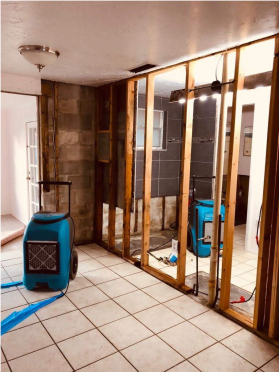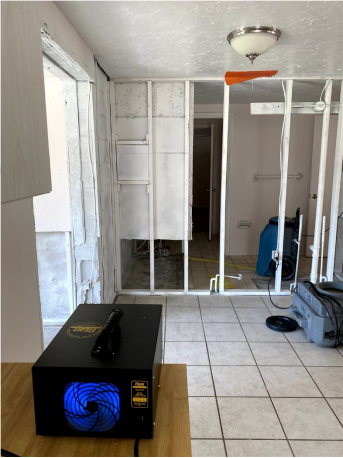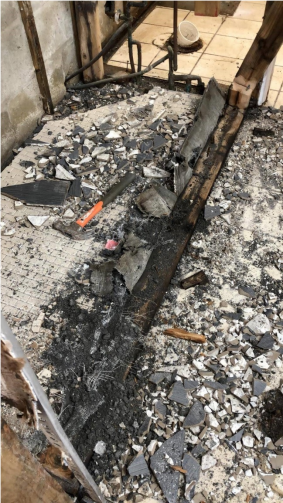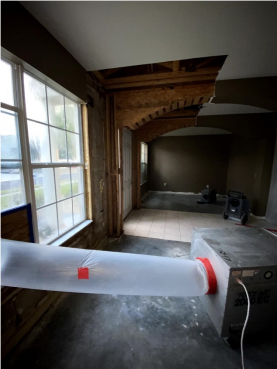
Tampa experiences its fair share of tumultuous weather, marked by the annual onset of storm season. From menacing hurricanes to sudden thunderstorms, the region is no stranger to the powerful forces unleashed by nature. Storm season in Tampa typically spans from June through November, coinciding with the Atlantic hurricane season. During this time, the warm waters of the Gulf of Mexico fuel the formation of tropical storms and hurricanes, which can wreak havoc on coastal communities. With its prime location, Tampa remains vulnerable to these weather events, necessitating thorough preparation to mitigate potential storm water damage and ensure the safety of its residents.
Preparing homes for storms isn't merely a precautionary measure; it's a fundamental aspect of safeguarding both property and lives. The destructive potential of storms, with their ferocious winds and torrential rains, can cause significant structural damage, flooding, and power outages. By taking proactive steps to fortify their homes and belongings, residents can minimize the risk of devastation and expedite recovery efforts in the aftermath of a storm.
Keep reading to learn more!
Understanding the Risks

Typical weather patterns in Tampa during storm season
Tampa, situated on the western coast of Florida, experiences distinctive weather patterns during the storm season. Characterized by warm temperatures and high humidity levels, this period typically extends from June through November, aligning with the Atlantic hurricane season. During these months, Tampa faces an increased likelihood of encountering tropical storms, hurricanes, and intense thunderstorms. The warm waters of the Gulf of Mexico serve as a breeding ground for these weather systems, which can rapidly intensify and pose significant threats to the region.
Potential hazards posed by storms
Storms in Tampa bring a multitude of hazards, each capable of causing widespread damage and disruption. Among the most prominent threats are:
· Strong winds: Hurricanes and tropical storms often unleash powerful winds exceeding 74 miles per hour, capable of toppling trees, damaging structures, and causing widespread power outages.
· Heavy rain: Intense rainfall associated with storms can lead to flash flooding, overwhelming drainage systems, and submerging roadways and low-lying areas.
· Flooding: In addition to rainfall-induced flooding, storm surge—caused by the onshore push of seawater—poses a significant threat to coastal communities, inundating coastal properties and infrastructure.
Assessing Your Home's Vulnerabilities

Taking a proactive approach to home security starts with identifying potential weaknesses. By performing a thorough self-assessment of your property, you can create a plan to address vulnerabilities and improve overall safety. Here's a breakdown to help you get started:
Exterior Inspection Checklist
· Roof: Look for missing or damaged shingles, loose flashing, and signs of wear around chimneys and vents. Check for proper drainage and clear gutters to prevent water damage.
· Windows: Ensure all windows have functioning locks and consider installing window stops or secondary locking mechanisms. Inspect for cracked or broken glass, and consider using shatter-resistant film for added security. Check the caulking around windows for gaps and ensure proper installation.
· Doors: Inspect the condition of door frames and hinges. Ensure all doors have deadbolts with at least a one-inch throw. Look for signs of forced entry attempts and consider reinforcing door jambs with strike plates. Check the weather-stripping around doors for proper seal.
· Landscaping: Trim bushes and trees near windows and entry points to eliminate hiding spots for intruders. Maintain clear visibility around the perimeter of your house. Consider planting thorny bushes under windows for added deterrence.
Interior Inspection Checklist
· Foundation: Look for cracks in the foundation walls or floors. Check for signs of moisture or water damage, especially around crawl spaces.
· Electrical Systems: Check for exposed wiring, overloaded outlets, or outdated electrical panels. Look for signs of flickering lights or burning smells. Consider having a qualified electrician inspect your system regularly.
· Plumbing: Inspect for leaks around pipes and fixtures. Check for signs of water damage, mold, or mildew. Ensure you have functioning shut-off valves for both hot and cold water supplies.
Identifying Potential Weak Points and Areas for Improvement
· Easy access points: Look for unlocked or easily accessible windows or doors, particularly on the ground floor. Garages and basement entrances are often overlooked.
· Poor lighting: Dark areas around entry points and walkways create opportunities for concealment. Consider installing motion-sensor lights around the perimeter of your house.
· Lack of security system: An alarm system with strategically placed sensors can deter break-ins and alert you to potential threats.
· Valuables in plain sight: Leaving valuables visible through windows can tempt potential intruders. Consider using curtains or blinds for privacy.
· Spare keys: Avoid hiding spare keys outside in predictable locations. Consider a lockbox with a combination code or leaving a spare key with a trusted neighbor.
Securing Your Property

Once you've identified weaknesses in your home's security (as outlined in the previous section), it's time to take action! Here are some steps you can take to address vulnerabilities and make your property less inviting to potential intruders:
Reinforcing Windows and Doors:
· Upgrade Locks: Install high-security deadbolts with at least a one-inch throw on all exterior doors. Consider adding secondary locking mechanisms like window stops or security bars for extra protection.
· Reinforce Door Jambs: Install strike plates on the door jamb where the deadbolt meets the frame. This strengthens the point of entry and makes forced entry more difficult.
· Window Security: Ensure all windows have functioning locks and consider window stops or secondary locking mechanisms. Explore options like shatter-resistant film on vulnerable windows, especially on the ground floor.
Clearing Gutters and Downspouts:
· Prevent Water Damage: Clogged gutters and overflowing downspouts can damage your roof and foundation, creating potential entry points for water and moisture. Regularly clean your gutters and ensure proper drainage away from the house.
· Maintain Visibility: Overgrown gutters can obscure windows and create hiding spots for potential intruders. Keeping gutters clear allows for better visibility around your property.
Trimming Trees and Securing Outdoor Furniture:
· Eliminate Hiding Spots: Trim overgrown bushes and tree branches away from windows and entry points. This eliminates potential hiding places for intruders and improves overall visibility around your house.
· Secure Patio Furniture: Heavy patio furniture can be a climbing tool for potential intruders. Secure outdoor furniture by storing it in a garage or shed when not in use. For permanently placed furniture, consider anchoring them to the ground.
Expert Services in Tampa by Flood Pros USA!
After a storm, water damage can wreak havoc on your property. Trust Flood Pros USA for swift storm water damage recovery services in Tampa. Our certified specialists offer efficient storm water damage cleanup and comprehensive restoration to restore your property promptly.
With 24/7 availability and expert techniques, we'll mitigate further damage and ensure your peace of mind. Don't let storm water damage disrupt your life—contact us today for swift recovery in Tampa!
Subscribe to Flood Pros USA's Blog


Comments